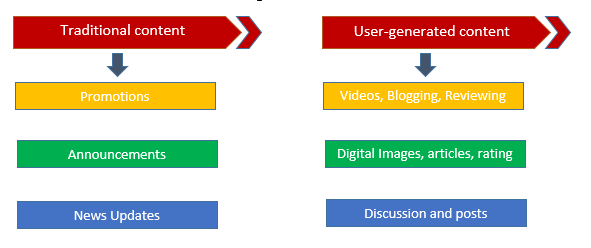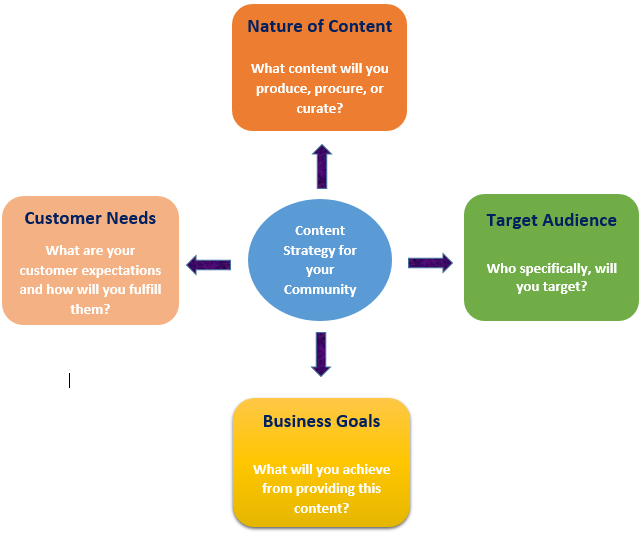Content is crucial for keeping a high-performing online community. It can take many forms, including blog posts, comments, help articles, release notes, technical documentation, videos, webinars, newsletters, or anything else on your website. If you want to build a strong community development platform or have just launched an online community, it’s essential to develop a content strategy tailored to your community, which is different from a typical marketing content strategy.
Why is community content different from the regular marketing content?
When it comes to developing content for your community, you must strike the right balance between traditional content and user generated content.

Things to consider to create the right content strategy for your online community
-
- Nature of the content: It is necessary to determine what type of content your audience would prefer reading.
Example: The members or users of an electronics company would like to read content about the launch of new electronic products, how to install them, troubleshooting tips, setup guides, and more. In contrast, the members of an IT service company would prefer content that addresses their IT-related questions, best practices, tips, and tricks. - Target Audience: In order to run your community effortlessly, it is important that you truly understand your audience first and figure out who exactly are you targeting. Once you are familiar with your target audience, you can easily create appealing and informational content that will engage customers in many ways and will encourage them to participate in the ongoing conversations
Example: An inbound marketing software platform provides top quality specialist content to a very specific audience group associated with CRM, Customer Service, Sales, and Marketing. Other than blog posts, it also provides high-quality, in-depth guides as well as video tutorials that add value to their customers.
- Nature of the content: It is necessary to determine what type of content your audience would prefer reading.
- Customer Needs: Be sure to identify the personal/behavioral/demographic needs of your customers and then provide them exactly what they are looking for. Personas play a significant part when it comes to identifying the needs of your customers. Creating personas is the most significant step in the community content strategy process, so you should not start up with this unless you have a firm grip on your targeted audience and their demands. Make sure to define their pain points first and then build the content that addresses them.
Example: Shopping online, some customers prefer buying standard products at the lowest possible prices. So, in order to fulfill this, they approach the websites that offer heavy discounts on a wide range of products. In contrast, some customers prefer choosing quality rather than quantity. These are the ones who believe in exploring their options first and then buying a quality product from a well-reputed online store instead of buying it from the fraudulent ones. - Business goals: Once you’ve delivered the content, it is necessary that you analyze its outcome and see whether it fulfills your business goals, i.e. marketing, sales, customer engagement, customer support, thought leadership, brand reputation, SEO rankings, etc., or not.
Example: You initiate discussions in your online community in order to retain customer engagement. Similarly, in your help portal, it is important to ensure that your articles/posts are descriptive and step based to solve the technical issues of the users – so that, you are able to deflect support cases and thereby, decrease your support costs.
Some final thoughts on developing a good content strategyIf you are looking forward to providing quality online community services to your customers, it is important that you stay patient and listen to your audience thoroughly. This will result in building trust with your audience, your community or your customers – and letting you identify the audience preferences better.
If executed correctly, a well-researched content strategy can strengthen relationships, develop trust, promote your brand, enhance your web presence/reputation and improve your community performance.
